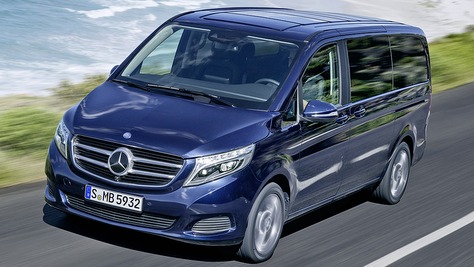
 Chip tuning, to put it simply, is an electronic increase in the power of the car’s engine. Apparently so little, but it makes the car behave completely different on the road – it is faster, more efficient, burns less fuel.
Chip tuning, to put it simply, is an electronic increase in the power of the car’s engine. Apparently so little, but it makes the car behave completely different on the road – it is faster, more efficient, burns less fuel.
And it turns out that the components after such modification are not worn any faster. If the owner cares about his car, even after driving 150,000 kilometers, the wear of parts is not greater than if the chip tuning had never been used. It gives a lot of additional joy to drive and additionally increases road safety.
Where are these extra horsepower coming from? After installing the chip to the engine control unit (ECU), we remove the locks and use the reserves that the car manufacturer left in the engines. The parameters entered into the ECU are converted to ensure the highest durability of the car, but not necessarily so that the engine develops the greatest power and torque and burns the least amount of fuel. This is due to the fact that there are car users who use poor quality fuel, do not change the oil or parts on time, therefore the engine is protected at the factory. The reserves it has to extend the time it works
in unfavorable operating conditions or damaged components. However, if the car is kept in very good condition, chip tuning can be used to increase its parameters without overloading the engine and components. However, it will only be done by an experienced mechanic-specialist who knows the limit of durability of the engine and components and will adjust the modification in such a way that the parameters will be close to the limit, but will not exceed it.
An interesting fact is that in Western Europe the fees for cars depend on the engine power, so most cars offered on the market, e.g. in Germany, have less power than their counterparts for the Japanese or American markets (despite the same torque!). Therefore, chip tuning gains now popular, also in Poland, where a network of car repair shops dealing with modifications, equipped
in professional sub-chassis dynamometers with precise measuring equipment that allows for appropriate tests of the car and precise adjustment of parameters so as not to overload the engine (the tests themselves last about 20 minutes). Depending on the method of modification of the engine controller, chip tuning allows for higher efficiency, power and torque, and possibly to reduce fuel consumption a bit without changing the driving style.
Is this type of modification only possible for passenger cars? Nothing could be more wrong! It is also used in tractors, agricultural machinery, trucks, snowmobiles and water scooters. Coming back to passenger cars, the most frequently modified ones, not all of them make sense to use chips. The modifications are best tolerated by supercharged gasoline units and diesel vehicles, where the differences in power are noticeably noticeable. When using chip tuning in naturally aspirated engines, the changes are cosmetic.
As an additional service, sometimes related to diesel tuning, garages offer non-invasive restoration of the car’s power by turning off the FAP / DPF filters. It is preceded by an in-depth diagnosis. It should be remembered that this is not possible in all models,
and the application of the solution may not be profitable in the long term. Before we decide on chip tuning, it is worth carrying out a thorough car diagnostics first, which will eliminate component damage. When we want to reduce fuel consumption, and the problem was a leak in the exhaust gas recirculation system or starting with a warm engine, the solution may be computer shutdown or shutdown of the EGR valve. Improving the starting dose may also help. If that doesn’t satisfy the user, he can choose
with two kinds of engine electronic modification. In order for the chip tuning to be performed correctly, the mechanic will carefully and precisely select new parameters, not necessarily according to the principle “the more the better”. Only then will we achieve better results without overloading the engine and components.
Speaking of modifications – in cars with a warranty, the so-called “Power boxes” that plug into the electrical installation of the vehicle We get improved parameters of the car without modifying the factory settings of the engine controller. Before the planned visit to an authorized service station, the user removes the power box, and the car returns to its “factory settings”, and the warranty is not lost. The second method of changes is to upload new software directly to the engine controller via the OBD socket. Here we directly modify the factory parameters of the car, thanks to which we gain the possibility of more precise and precise setting of all parameters, additionally taking into account the operation of other components.
Chip tuning is not a cheap change in a car, but if we want our car to work flawlessly, and additionally have “that something”, then it is not worth saving on modifications. Cost-effective action can
be felt at any time and in some cases even dangerous. However, it is worth taking the risk.
Sprawdź koniecznie
-
The producer of the hall and the construction of the squash hall - practical information
The construction of a squash hall requires the manufacturer of tent halls to remember about many important…
-
Chip tuning
Chip tuning, opisując najprościej, to elektroniczne zwiększenie mocy silnika samochodu. Niby tak niewiele, ale sprawia,…
-
Purchase of an apartment. How to choose the best offer for yourself?
When making a decision to buy an apartment, you should take into account many guidelines. A…
-
The growing popularity of aesthetic medicine
Aesthetic medicine is a field that is developing more and more dynamically. Treatments for which celebrities are…
-
Accounting office and its participation in taking care of the company's finances
Every experienced entrepreneur is well aware of the importance of accounting in his company. Of…








